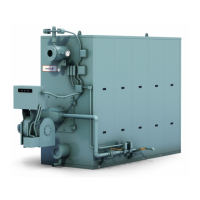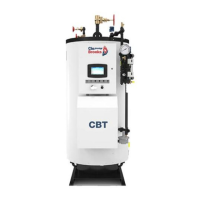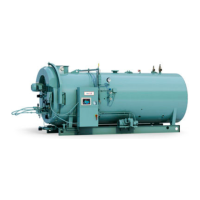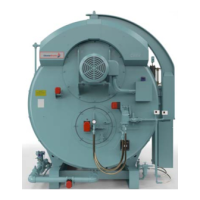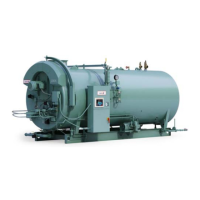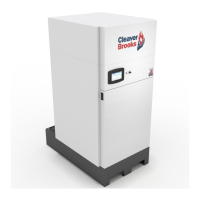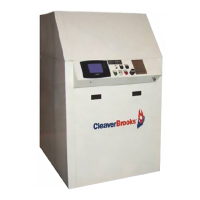Chapter 3 General Description
3-12 750-177
Both fireside and waterside surfaces must be cleaned of all scale, deposits, soot, and other combustion
products as soon as possible after shutdown.
All openings to the pressure vessel, such as handholes or inspection ports, should be closed tightly. Feedwater
and
system valves should be closed. Dampers should be closed to prevent air from reaching the fireside
surfaces.
Steps must be taken to eliminate moisture by placing moisture-absorbing materials on trays inside the boiler.
Two moisture-absorbing materials are: quick-lime (at 2 pounds for 3 cubic feet of volume) or silica gel (at 5
pounds for 30 cubic feet of volume). As soon as the material is in place, close all boiler openings and blank
all connections.
!
DANGER
WARNING
Materials described in this section may be considered hazardous under the U.S. Occupational
Safety and Health Act of 1970. Material Safety Data Sheets should be obtained and understood prior
to the use of these products to avoid the possibility of serious personal injury or death.
Wet Storage
Note: It is always best to consult with a water treatment consultant before proceeding with extended layup.
Wet storage is used when the boiler will be out of service for shorter periods of time, when a boiler is held in
standby conditions, or in cases where dry storage is not practical. The boiler held in wet storage can be
brought back into service more quickly than one held in dry storage. However, the possibility of freezing
temperatures must be considered. Again, take care to protect metal surfaces. Because of the number of
variables, it is difficult to offer definite recommendations. However, it is suggested that the pressure vessel be
drained, thoroughly cleaned internally, and refilled to overflowing with treated water.
If deaerated water is not available, the unit should be fired to boil the water for a short period of time in order
to drive off oxygen in the water.
Tightly close all connections and apply a small positive pressure to compensate for the vacuum that will
develop as the unit cools to room temperature. Internal water pressure should be maintained at greater than
atmospheric pressure. Nitrogen often is used to pressurize the vessel.
The boiler water should be tested weekly as long as the unit is in storage. Additional chemicals may be
required to prevent internal corrosion. If more chemicals are added, it is desirable to circulate the boiler water
for a short time by means of an external pump.
Contact your local Cleaver-Brooks authorized representative for water treatment chemicals or for assistance
as needed.
